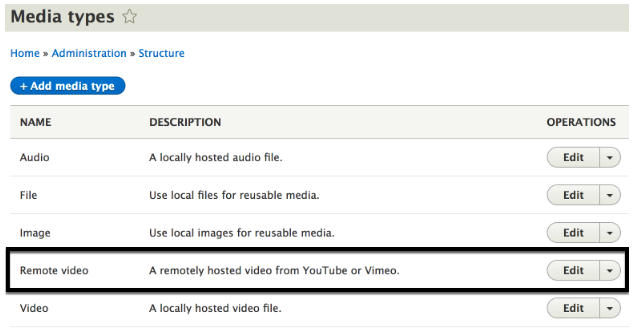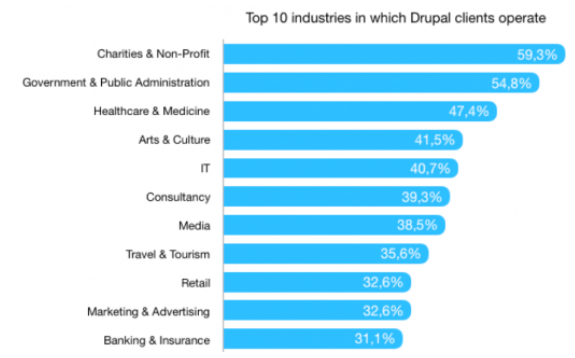Validated by the “State of Drupal 2016 survey”, two of the most demanded features by the content authors participating in it were - media integration and digital asset management. Hence, “media initiative” was proposed for Drupal 8.
For the people who are using Drupal as their “media handling” would agree that Drupal has improved with its every release. In Drupal 8.4, experimental core media module was introduced, then in 8.5 it moved to stable, and now in Drupal 8.6, there are a few extra features added to the vanity. Features like - oEmbed support, a remote video media type and a media library have made their way to the core.

Drupal 8.6 Release easily explains why the ever-growing community of Drupal users was eagerly anticipating this latest version which promises to focus on enhancing the user experience as a priority.
Here are the new features included in the latest release of media management.
Media Management in Drupal 8.6
- Media Management and Support
Drupal 8.6 has marched its way to provides its users with the new Media Field module. This module will create fields for the content types that are utilized for displaying videos, images, and audio files from various third party providers. This upgrade remarkably enhances the experience of the content publishers and the content marketing teams. Customizing media based on the user needs, and upgrading the CMS for a better version of editing, publishing, and management of the content.
This new update consist of three most important media sources:- Embedded image field
- Embedded video field
- Embedded audio field
Hence, the media field automatically determines that which content provider is being used and also verifies while displaying the content, that proper embedding format is done or not.
-
Embed Remote Content
Keeping all the content authors and other audience in mind, Drupal 8.6 has introduced us with oEmbed support. It lets the user embed external media, such as YouTube, Instagram, Filker, Facebook and Vimeo videos via URL. In technical words, a format allowing an embedded representation of an URL on the third party websites. This would present the users with the power of displaying embedded content like photos or videos.Easy right?
Drupal core supports a basic API for communicating with oEmbed services in a standard way.

-
Media Library (experimental)
People who are new to Drupal might want it to be very easy concerning content authoring. Hence, this new feature was added to the whole release. An experimental media library with workspace module was added to provide the audience with sophisticated content staging capabilities. It allows the user to choose from existing media to place into the post, as well as upload the new items directly from the library.
It also allowed its audience to expands the media and all the file entry modules to present the users with the ability to restrict any files that are considered as a part of a site's media collection. This has made quite a stir on the upcoming layout builder.
Future of Media Management in Drupal 8.6
It is quite evident that this latest update is powerful in terms of extensible base functionality for handling the media in the core.

All thanks to the Drupal Business survey, We now have a pure glance at Drupal's massive adoption in the media and entertainment market. This update would now support the reuse of media assets, media browsing, and remote media. Not to forget that the Layout Builder is casting up to be a very powerful tool that solves a lot of authoring challenges, and is something many are looking forward to.
Media management can be cleanly extended by contributed modules for various additional functionality and integrations.
Media management would only make it easy for users to use media entities and provide them with:
- Enabling of media from a remote source
- Addition of various types of media
- Embedding videos from Youtube and Vimeo in the content (with an URL)
- Allowing easy accessing and reusing of the existing media
- Updating and Uploading the new media types right out of the box
Conclusion
Yes, Drupal has come a long way in terms of content workflow and media management, but to be very honest it requires more improved features and improved aspects of entity API in the core.
These mentioned features have made Drupal a successful intuitive community. Contact us at [email protected] to understand the needs of your business better.
Subscribe
Related Blogs
Inside the Drupal AI Summit: Themes, Speaker and What To Expect

“ The web is changing fast, and AI is rewriting the rules. It writes content, builds pages, and answers questions directly,…
FOST and Drupal AI Initiative: Next Era of Responsible AI

Three years after the launch of generative AI tools marked a new age for artificial intelligence, almost 90% of survey…
Drupal AI Ecosystem Part 5: AI Content Suggestions

Drupal has steadily evolved from being just a content management system into a flexible platform that incorporates emerging…




